

Architecture for Autism: Overview and Analysis

Autism is a complicated spectrum disorder that involves consistent change of social interaction, verbal and nonverbal communication. Autistic children face difficulty in communication and working with the world outside. The effects of autism show severe signs and symptoms in children. The first symptoms are revealed in children around two to three years old. But apart from this, few children present symptoms until they are a toddler. If symptoms are noticed earlier the better as you can aide it as soon as possible. You can have digital therapy referrals that can assist you in your situation and help you out the best that they could. Give answers to your inquiries and right treatment for your child.
According to the CDC, one in 59 children is estimated to have autism. Therefore as a designer, we have a solid responsibility to design spaces for these specially-abled children.

The latest study revealed autism is more common in boys than in girls, and it is a lifelong condition connected to the child. Moreover, children diagnosed with autism syndrome can live life independently as every child deserves the best. Hence as a designer, it is our responsibility to make it possible.
Need of Autism and Architecture

According to the latest report by CDC estimates that 2-5 children out of 1000 have symptoms of autism disorder. In addition to this, the numbers are increasing rapidly. In India, 1 in 88 are suffering from autism syndrome. The government only recognized the disorder in 2001, till the 1990s, there were reports that autism didn’t exist in India (dry Vinod Kumar Goyal TOI). These alarming rates of increase call for attention by all the fields, and clear architecture has been ignoring the effect of the built environment in their development.
Such statistics are encouraging designers to look for specially-abled children. The increasing numbers tell us that as a designer we are responsible for designing the spaces for specially-abled users . It doesn’t matter if it is a mental or physical disability. Now the architecture industry has to come forward to design spaces for the specially-abled.
Classification of Autism Syndrome
Autism syndrome is common in children; when we are about to design spaces for them, it is important to know the types and classification of the condition. It helps in understanding the condition and encourages design for a user-end experience. The autism syndrome is classified as follows :
- Asperger Syndrome
Autism children who are diagnosed with Asperger’s syndrome are very intelligent and can handle their daily activities. The autistic child might be very focused on topics of interest but will find it difficult to socialize with others.

- Pervasive developmental disorder
The pervasive developmental disorder is the next supreme level of Asperger’s syndrome. It might not appear like an autism disorder but has an extreme level of behavioral pattern.
- Autistic disorder
It has the same signs and symptoms as Asperger’s syndrome; the autistic child will find it difficult to interact with others and have slow learning skills.
- Childhood disintegrative disorder
Childhood disintegrative disorder is the rarest and severe part of the syndrome. It is a seizure disorder where an autistic child loses all social and mental skills during the first five years.
- Rett Syndrome
Rett Syndrome is associated with autism disorder, and experts group it under spectrum disorder. A genetic mutation causes it; therefore, it is not considered ASD.
Therapy spaces for Autistic children

When designing for autistic-oriented users, we must look into their behavior patterns as a designer. Autistic children have different ways of communication, and therefore we must design spaces that help in easier communication with its user. The designer must add a sense of connection, and an architect must add calmness for specially-abled users.
- Occupational therapy
Occupational therapy teaches a skill that helps the person live as independently as possible skills might include dressing, eating, bathing, and relating to people
- Sensory integration therapy
Sensory integration therapy helps the person deal with sensory information like sights, sounds, and smells. In addition to this, it helps autistic children who are not bothered by the sound.
- Speech therapy
Speech therapy has a vital role in improving the autistic child’s communication skills. In addition to this, it helps in the development of verbal communication skills. For others, using gestures or picture boards is more realistic
- The pictures exchange communication systems
Pecs uses picture symbols to teach communication skills. Autistic children communicate by using picture symbols for conversation.
Awareness for Autistic oriented design
The study has stressed the importance of including students on the Autism spectrum in general education environments. This inclusion, that is, their integration and participation to attend the same classes with non-disabled students, would not be achieved without providing the necessary support. This support includes a quiet, distraction-free learning environment with sufficient personal space that would allow them to recalibrate and readjust their senses.

That in addition to the high-interest areas that conform to these students’ statuses, and that would make their inclusion a The various strategies presented in this study reveal the importance of the role of architects in providing these inclusive environments that should guarantee equal opportunities for all society members and help mainstream students with autism into society social mainstream.
- Raising the awareness of professional architects and designers of the importance of providing inclusive autism-friendly environments, especially educational ones, to prepare the members of this group for better community integration and a higher quality of life.
- It is important to teach the next generation of designers through adjusted curriculum and courses for a specially-abled design perspective.
- Raising community awareness of the importance of autism and architecture.
Case Study: Advanced Autism Center, Egypt
There is no better way to study a typology of design than a case study. Advanced Autism Center Egypt is located in Cairo, Egypt. Ar Magda Mustafa designed it. Furthermore, Ar. Magda Mostafa designed the spaces for autistic children keeping their behavioral and design concepts in mind. Therefore the spaces are divided purposely into low, high, and transitional stimuli zones. The site is located in Cairo and is surrounded by township and katameta golf tennis.

The internal spaces are divided as per sensory potential into three groups. The groups of design stimuli are low, high, and transitional spaces. The criteria of stimuli are used in escape space, translational spaces, and sensory zones. The center is placed on the west side of Cairo in a residential area. Low-rise buildings define the character of the area.
Stimuli are defined as unusual reactions in the respective sensory organs.
High Stimuli: Sensory information coming from a built environment might be a simple bright color.
Low Stimuli: In the low stimulus environment project.
Transition space: The sensory garden is organized. Inspiring the different senses — sight, sound, taste, touch, smell. A garden with a play area for physical development. The two zones are connected by a long corridor that provides intimacy to the treatment. This area is the administration department and hydrotherapy. And these areas are under high stimuli.

Hydrotherapy: Inspiring the different senses, sight, sound, taste, touch, and smell. Hydrotherapy can improve social behaviors, and it can aid sensory processing disorders in the central transition nucleus, providing easy access to all the treatment rooms. The structure is divided into four volumes of spaces and has a five-floor height massing. In addition to this, it has a sports center, public relations area, and hostel units.
Design perspective

Autism spectrum disorder (ASD) is a complex developmental condition involving persistent challenges in social interaction, speech, nonverbal communication, and restricted/repetitive behaviors. Studying the mindset of autistics in itself is a very vast subject; hence the topic limits itself to the study and research of their behavioral aspects in educational environments and environments which help them in rehabilitation. The main perspective of design should be defining quiet spaces, open circulations, and multi-sensory spaces.
The perspective of the design should be:
- To understand the environmental implication for teaching strategies used for children with autism in educational spaces.
- Address their needs and design accommodation based on their behavioral aspects, cultural and social aspects.
- Visual character, spatial sequencing, and it’s quality escape areas clutter-free space color texture materials acoustics.
https://www.intechopen.com/chapters/42147
https://www.aaed.org/uncategorized/autism-and-architecture/
https://www.archnet.org/publications/9101
https://my.archdaily.com/us/@mark-p/folders/autism

Ar. Ritu Gosavi is a published co-author of the two anthology " A poet's Pulse" and "Slice of life" , graduated from College of Architecture Nasik .A brilliant content writer since 2019 bringing light on social and patriarchal norms through her writing page called "Ruminant". An architect, author, and audacious , a classical and japanese literature lover.

Rethinking Architecture Beyond Buildings

The Evolution of Materials in Architecture
Related posts.

School for Blind and Visually Impaired Children by SEAlab

Chowmahalla Palace, Hyderabad

Sanskar Kendra, Ahmedabad

Project in-depth: The Channel Tunnel (Eurotunnel), UK-France

The Lingaraja Temple, Odisha

Evergreen Line Stations by Perkins and Will
- Architectural Community
- Architectural Facts
- RTF Architectural Reviews
- Architectural styles
- City and Architecture
- Fun & Architecture
- History of Architecture
- Design Studio Portfolios
- Designing for typologies
- RTF Design Inspiration
- Architecture News
- Career Advice
- Case Studies
- Construction & Materials
- Covid and Architecture
- Interior Design
- Know Your Architects
- Landscape Architecture
- Materials & Construction
- Product Design
- RTF Fresh Perspectives
- Sustainable Architecture
- Top Architects
- Travel and Architecture
- Rethinking The Future Awards 2022
- RTF Awards 2021 | Results
- GADA 2021 | Results
- RTF Awards 2020 | Results
- ACD Awards 2020 | Results
- GADA 2019 | Results
- ACD Awards 2018 | Results
- GADA 2018 | Results
- RTF Awards 2017 | Results
- RTF Sustainability Awards 2017 | Results
- RTF Sustainability Awards 2016 | Results
- RTF Sustainability Awards 2015 | Results
- RTF Awards 2014 | Results
- RTF Architectural Visualization Competition 2020 – Results
- Architectural Photography Competition 2020 – Results
- Designer’s Days of Quarantine Contest – Results
- Urban Sketching Competition May 2020 – Results
- RTF Essay Writing Competition April 2020 – Results
- Architectural Photography Competition 2019 – Finalists
- The Ultimate Thesis Guide
- Introduction to Landscape Architecture
- Perfect Guide to Architecting Your Career
- How to Design Architecture Portfolio
- How to Design Streets
- Introduction to Urban Design
- Introduction to Product Design
- Complete Guide to Dissertation Writing
- Introduction to Skyscraper Design
- Educational
- Hospitality
- Institutional
- Office Buildings
- Public Building
- Residential
- Sports & Recreation
- Temporary Structure
- Commercial Interior Design
- Corporate Interior Design
- Healthcare Interior Design
- Hospitality Interior Design
- Residential Interior Design
- Sustainability
- Transportation
- Urban Design
- Host your Course with RTF
- Architectural Writing Training Programme | WFH
- Editorial Internship | In-office
- Graphic Design Internship
- Research Internship | WFH
- Research Internship | New Delhi
- RTF | About RTF
- Submit Your Story
Looking for Job/ Internship?
Rtf will connect you with right design studios.

- Telemedicine
- Healthcare Professionals
- Go to MyChart
- Find a Doctor
- Make an Appointment
- Cancel an Appointment
- Find a Location
- Visit ED or Urgent Care
- Get Driving Directions
- Refill a Prescription
- Contact Children's
- Pay My Bill
- Estimate My Cost
- Apply for Financial Assistance
- Request My Medical Records
- Find Patient Education
- Refer and Manage a Patient
- Research and Clinical Trials
Autism is a spectrum of disorders with different causes and pathways. So, kids with autism need treatment custom-made for them. To help every child with autism thrive, Seattle Children’s Autism Center researches:
- How autism develops
- How the brain is involved
- How children and teens with autism respond to therapies and services
- How we can improve the quality of life for people with autism spectrum disorder (ASD) and their families
Some studies collect information to help us learn about the causes and effects of autism. Others are called clinical trials. They test new ways to diagnose or treat autism in people. For example, a clinical trial might test a medicine, device or therapy. The goal is to see how well it works and make sure it is safe. We have many studies going on now.
To learn more about how to get involved, call 206-987-7917 or email us . We can let you know of studies that might apply to your child. Your family may be able to take part in research even if you are waiting for an appointment in our clinic.
Our Autism Blog often reports on our research. These projects show some of the many ways we learn about autism and how to better care for children.
SPARK is an autism research study and a growing community of autistic individuals, their families and researchers working together to advance the understanding of autism. Its mission is to improve the lives of people with autism by identifying the causes. This can help inform more effective therapies, treatments, services and supports. The study involves giving a saliva sample for DNA analysis. It is open to people with an autism diagnosis and the parents of children with autism spectrum disorder. SPARK can also connect participants with other autism research studies.
To learn more, see:
- SPARK: Understanding Autism
- After 20 Years, a Mom Finds an Answer (Video 2:52)
A registry is a place where researchers keep information about people who have a condition so they can learn more about it. If you’d like, we can add you to our autism research registry, overseen by Dr. Soo-Jeong Kim . Then, when we begin a new study that may fit your family, we can reach out to tell you about it and you can decide if you want to join.
To find out about joining the registry, call 206-987-7917 or email us .
Biomarkers are ways to measure how the body is working. Dr. Sara Webb works to develop biomarkers that tell how the brain and body work in children with autism and other conditions that affect the nervous system. She uses many ways to get information. These include measuring electrical activity in the brain and heart. She also tests where the eyes look (eye tracking) as a screening tool for toddlers who might have autism.
Webb aims to better understand why some children develop autism. She also wants to improve services for children with social challenges. She directs the Psychophysiology and Behavioral Systems Lab at Seattle Children’s Research Institute.
Seattle Children’s and the University of Washington are part of the Autism Biomarkers Consortium for Clinical Trials .
Four times more boys than girls are diagnosed with autism. Dr. Sara Webb wants to know why. It might be that signs of autism are different in females than in males. Or doctors may miss clues because girls are better at hiding their social struggles. Webb directed the Seattle site for the GENDAAR study. The study’s goal was to understand more about sex differences in brain structure, function, connections and genetics in youth with autism.
Dr. Sara Webb is working with others at the Research in Autism and the Brain Lab at the University of Washington on autism research. They want to learn more about brain signals in people with autism as well as neurotypical people. They use brain imaging, like fMRI (functional magnetic resonance imaging) , to look for differences in brain signals between the 2 groups. Behavioral assessments help them look for links between the signals and behavior.
Most children with 16p11.2 deletion syndrome have symptoms of autism. The syndrome happens when a small piece of chromosome 16 is missing. Seattle Children’s is part of a study to test the medicine arbaclofen in children who have this syndrome. It’s called the L16HTHOUSE study. Researchers are checking whether the medicine helps with development, such as speech, learning and social function.
Dr. Frederick Shic’s team at Seattle Children’s Innovative Technologies Lab makes and studies tools to understand and help children with autism. The tools include robots, video games and technologies that track where kids look and how they process information. These methods:
- Help engage children in learning
- Can help children look at problems in new ways
- Tell us about a child’s strengths and choices
More than 100 genetic changes are linked to autism. Dr. Stephen Smith’s lab works to find out:
- How these changes affect the way the brain works
- If different changes affect the brain in similar ways
Current research focuses on the connections between the brain’s nerve cells. These are called synapses. They control how the brain processes information. The lab’s long-term goal is to group children with autism based on how their genetic changes affect their brains. This would open the door to new treatments for different types of autism. His lab is part of our Center for Integrative Brain Research .
Study after study finds no link between the measles-mumps-rubella (MMR) vaccine and autism. Seattle Children’s doctors work to dispel fears so parents get the lifesaving MMR vaccine for their children. Our former Autism Center director wrote an editorial in the Journal of the American Medical Association about this issue.
How to Take Part in Research Studies
- To learn about research at the Autism Center, call 206-987-7917 or email us .
- See our online listing of research studies and clinical trials .
- Get answers to common questions about taking part in research , such as how we protect your child’s health and safety during research.
Ways to Help
Donations from people like you help researchers explore ideas that could lead to life-changing treatments for kids with autism. Give today .
If you would like an appointment, ask your child’s primary care provider to refer you. Learn more about how to get services at the Autism Center .
Providers, see how to refer a patient .
Also in This Section…
- Contact Us and Location
- How to Get Services
- Meet Your Team
- Treatments and Services
- What to Expect
- Patient and Family Education
- Refer a Patient
- The Autism Blog
Stay Connected
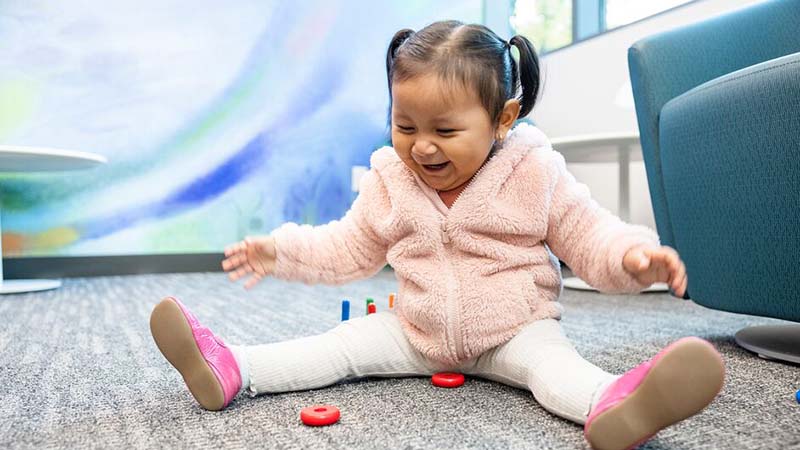
- Read the Autism Blog
- Follow us on Facebook
- Explore resources
- Learn more about the Alyssa Burnett Adult Life Center
Contact Us: 206-987-8080
For Healthcare Professionals
- Manage a Patient
- Provider News
Seattle Children’s complies with applicable federal and other civil rights laws and does not discriminate, exclude people or treat them differently based on race, color, religion (creed), sex, gender identity or expression, sexual orientation, national origin (ancestry), age, disability, or any other status protected by applicable federal, state or local law. Financial assistance for medically necessary services is based on family income and hospital resources and is provided to children under age 21 whose primary residence is in Washington, Alaska, Montana or Idaho.
Book Appointment
- Autism Treatment
- Behavior Problems
- Mental Retardation
- Parental Guidance
- Cerebral Palsy
- Learning Disabilities
- Poor Memory
- Down Syndrome
- Sensory Processing Disorder
- Testimonials
A Case Study of Autism: Paul, 3 Years Old
- Autism Blog
- A Case Study of Autism:…
Arun was brought for consultation with Dr. A M Reddy by his parents. He was about 4 years old, the second child to the parents. Even while he was being brought into the room, we could hear his loud wailing. It took some time for the child to calm down and later we could observe that the child was very restless. He was running around the room, pulling down cushions and generally creating chaos in the room and mother was quite harried in trying to control him. He was diagnosed with ASD (Autism Spectrum Disorder).
What is ASD?
Autism or Mutinism as it was earlier known was thought primarily to affect communication skills but with more studies, it was understood that autistic children display a wide range of symptoms, hence the word “spectrum” was added to Autism disorder. Autism is a complex neurodevelopmental disorder which affects a person’s social behavior and communication skills.
Why it occurs?
The exact reason why ASD occurs is not known but many risk factors have been identified like age of the parents, poor ovulation, infections or exposures to harmful chemicals or radiation during pregnancy, thyroid, diabetes type of hormonal disorders, birth injuries, infections in childhood, vaccinations, etc.
What are its symptoms?
As its name suggests, ASD displays a myriad of symptoms but some of the common symptoms of ASD is lack of speech. While some children have no speech, in some children speech that was developed before may regress. Many of them do not prefer to mingle with children of their age group. Repetitive action, physical restlessness, inability to understand emotions, mood swings like sudden bouts of excitement, crying without any reason, are few symptoms displayed by many autistic children.
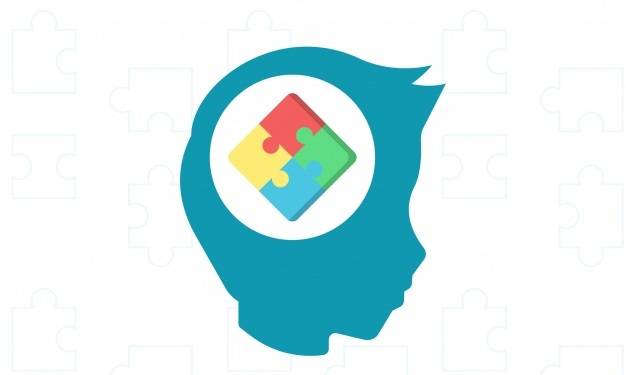
Aggressive behaviors like self-harming, head-banging, tantrum-throwing, biting/pushing others, destructiveness, can be displayed by few. Response to name call, having sustained eye contact, unable to understand commands, stereotypical actions and stimming are some of the common symptoms exhibited by many.
Coming back to the case of Arun, a detailed case history was noted down by our doctors, a summary of which is given below.
He is the second child and the age difference between both the siblings is seven years. After the first child was born, the mother developed hypothyroidism for which she was on thyroxine 50 mcg daily tablets. No history of abortions or contraceptive use was reported. Father was apparently healthy. The age of the parents was 35 and 38 years respectively during conception. She conceived naturally and pregnancy was apparently uneventful. But on deeper probing few differences were found out between both the pregnancies.
While during the first pregnancy the parents were in India, but during second there were in the United States. She was advised to continue with the same dosage of thyroxine and during 6-7 months of the pregnancy, she was given flu and T Dap vaccine. The child was born of emergency C – section as the water broke early. The birth cry was normal and seemingly the child was progressing well but after his first birthday, the child had a bout of severe gastrointestinal infection when they visited India where he was hospitalized for three days and given medicines.
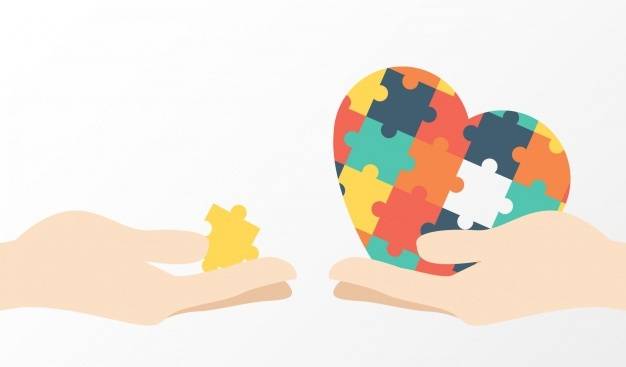
Parents were worried that he seems to put everything in his mouth and his favorite items were paper, cloth, wall plaster. His demands have to be met, else he used to become very upset. Emotional connectivity towards parents was less. He would not follow simple commands and it was becoming increasingly difficult for the parents to manage him. With therapies, his eye contact improved a little and was able to follow a few simple commands but the progress was slow.
He was a picky eater and liked crunchy foods. His bowels were constipated and he was not yet toilet trained. He was given Cuprum Sulph 10 M and was kept on regular follow up.
On the next visit to Dr. A M Reddy Autism Center , the parents complained that their child developed itching on the skin but his restlessness reduced slightly. The medication was continued for about three months during which the child’s anger reduced by 30%, his eye contact improved and he was no longer constipated. His itching too reduced in the meanwhile. A second dose was repeated and about six to seven months of treatment, he started saying few words, tantrum-throwing reduced and his habit of putting everything in the mouth was gone.
The dose was repeated in 50M potency. After about a year and half of treatment, he started interactive communication, giving relevant answers to questions and was doing much better. On the advice of Dr. A M Reddy, they placed him in normal school and he is doing well.
Leave a Reply Cancel reply
Your email address will not be published. Required fields are marked *
Save my name, email, and website in this browser for the next time I comment.
Post comment
Our groundbreaking research makes meaningful and lasting improvements in the quality of life for autistic individuals and their families.
Our interdisciplinary team of neurobiologists, computer engineers, data scientists, psychiatrists, psychologists, and physicians are conducting groundbreaking research to create more accurate and scalable methods of early detection, improve and disseminate therapies, test new treatments, and make new discoveries in genetic and molecular science. Our research discoveries meaningfully impact autistic individuals throughout the lifespan and play a pivotal role in reducing global healthcare inequities and increasing access to proven therapies worldwide. We are an “NIH Autism Center of Excellence” and part of the multi-site NIH Autism Biomarkers Consortium for Clinical Trials, the largest autism research study in NIH history.
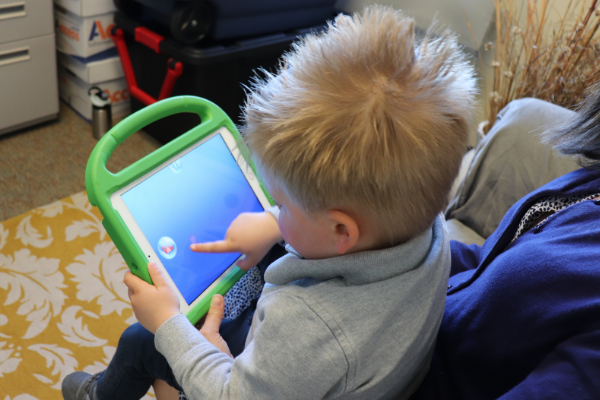
Creating accurate, scalable tools for early detection & treatment monitoring
A collaborative team of neurobiologists, computer engineers, data scientists, and psychologists have created a digital app to track behaviors such as attention span, motor skills, emotional expressiveness, vocalizing, and interest in social cues. Using computer vision analysis and machine learning, the team has published research showing that the app detects early signs of autism in toddlers and is now testing the same tool in Duke Primary Care clinics with infants as young as six months. The app allows precision in measuring changes in behavior, providing a more reliable, sensitive tool for measuring improvement in clinical trials.
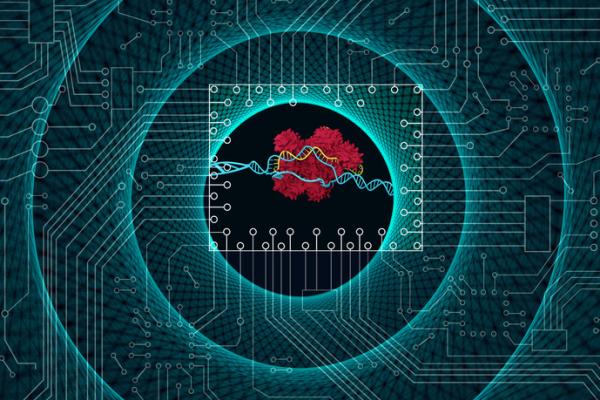
Harnessing artificial intelligence to guide physicians
Duke sees nearly 3,000 patients on the autism spectrum each year. The center’s data scientists and clinicians are applying artificial intelligence, such as machine learning and natural language processing, to Duke patients’ electronic health records to determine whether information collected during routine health care visits could alert physicians to patients who may develop neurodevelopmental disorders. The same methods are being used to better understand variations in lifelong health trajectory for autistic individuals or developmental conditions, helping medical providers anticipate unique health needs and customize patient care.

Examining cellular therapies & brain function
Center researchers are testing whether cell therapies, derived from cord blood or tissue, could improve social and communications skills in children and adults who have been diagnosed with autism. Researchers are currently examining potential improvements in behavioral outcomes, as well as changes in brain activity and attention abilities. The team has published study results showing that cord blood might enhance attention to stimuli and improve communication skills in children with autism who do not have intellectual disability. More research is underway to evaluate whether cellular treatments could benefit children and autistic adults.
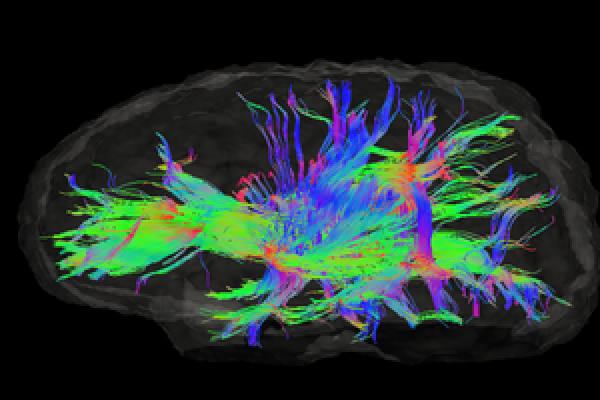
Unveiling how genetic mutations affect synaptic pathways
A center team of molecular biologists, neurobiologists, and neuropsychopharmacologists are using animal models and state-of-the-art technologies, such as CRISPR, to help understand how genetic mutations impact synaptic pathways in the brain, affecting speech, social and communication skills. Using novel techniques developed at Duke, the team is developing a deeper understanding of how rare gene mutations affect brain function, setting the stage for finding new treatments to improve quality of life.

Adapting & disseminating therapies to reduce disparities in access to treatment
Proven behavioral therapy methods developed by center investigators, such as the Early Start Denver Model, can have a significant impact on outcomes for those on the autism spectrum. Yet, for many people in low-resource communities in the U.S. and worldwide, these therapies are out of reach. Center investigators are assessing whether effective caregiver coaching can be delivered via telehealth and by non-specialist providers. Another study is extending methods that were originally developed for young children to school-age children. These studies could open the door to greater access to scientifically proven therapies for those living in socio-economically disadvantaged and rural communities worldwide.
Learn About Our Research Studies

Duke Autism Research Registry

Visit Our Faculty Research Labs

Exceptional People. Extraordinary Discoveries.

Case Study: Pacific Autism Family Centre
About this project.
In 2013, BKL was asked to consult on the acoustic design of the Pacific Autism Family Centre , a facility that provides support and learning opportunities for children, youth and adults with Autism Spectrum Disorder, as well as their families. The facility includes a treatment centre, clinic and research centre, all under one roof.
Because the facility is located next to the Vancouver International Airport, one critical design challenge was isolating the building envelope from aircraft and road traffic noise. BKL worked closely with the architects, NSDA, to design acoustical features and recommend building materials to sufficiently minimize noise ingress.

Scope of Services
To inform the requirements for sound isolation, BKL carried out 24-hour noise measurements on site. From there, BKL advised on exterior design features (heavy glazed windows, for example) and interior finishes—ceiling, carpet, furnishings—to control reverberant noise and ensure a good acoustical environment. BKL also set sound isolation criteria for internal partitions, and worked with other members of the design team, including mechanical engineers, to limit noise from internal sources such as the HVAC system.

Project Benefits
When the facility opened in November 2016, people noticed its good acoustics. Sergio Cocchia, chair of the Pacific Autism Family Centre Foundation and father of an autistic son describes the building’s quietness in an interview with BC Hydro : “You walk up some floors and it’s amazing how quiet it is. We’re close to the airport and on a bit of flight path, but inside the building you won’t hear any of that.”
Locating a building with critically noise-sensitive spaces in a high-noise environment presents many acoustical challenges. Yet BKL’s early involvement with this project and its attention to detail throughout contributed to the successful design and construction of a facility that will benefit BC children and families for years to come.
What People Are Saying
The Pacific Autism Family Centre was a complex project with external and internal acoustics concerns being among the most critical design problems. BKL worked closely with us to identify both the acoustic issues and the most cost effective solutions to address them. Their attention to detail, technical knowledge and sensitivity to the budget constraints enabled us to successfully meet the project targets.
— Larry Adams, NSDA Architects

Year Completed:
Capital cost.
$28 million
60,000 square feet
Case Reports in Autism
Loading... Editorial 23 January 2024 Editorial: Case reports in autism Marco Colizzi and Fengyu Zhang 516 views 0 citations
Case Report 05 January 2024 Successful perioperative preparation of a child with autism spectrum disorder in collaboration with his school for special needs education: a case report Yuto Arai , 2 more and Yoshihiro Maegaki 1,136 views 0 citations
Community Case Study 02 November 2023 An individual-supported program to enhance placement in a sheltered work environment of autistic individuals mostly with intellectual disability: a prospective observational case series in an Italian community service Roberta Maggio , 7 more and Francesca Cucinotta 1,069 views 0 citations
Case Report 29 September 2023 Case Report: A playful digital-analogical rehabilitative intervention to enhance working memory capacity and executive functions in a pre-school child with autism Sabrina Panesi , 1 more and Lucia Ferlino 1,413 views 0 citations
Case Report 24 August 2023 Autism spectrum disorder and Coffin–Siris syndrome—Case report Luka Milutinovic , 4 more and Milica Pejovic Milovancevic 1,656 views 1 citations
Case Report 21 August 2023 Case report: A novel frameshift mutation in BRSK2 causes autism in a 16-year old Chinese boy Yu Hu , 7 more and Lixin Yang 1,281 views 1 citations
Loading... Case Report 18 August 2023 Case report: Substantial improvement of autism spectrum disorder in a child with learning disabilities in conjunction with treatment for poly-microbial vector borne infections Amy Offutt and Edward B. Breitschwerdt 7,698 views 0 citations
Case Report 17 August 2023 Fecal microbiota transplantation in a child with severe ASD comorbidities of gastrointestinal dysfunctions—a case report Cong Hu , 8 more and Yan Hao 1,252 views 0 citations
Case Report 28 July 2023 Autism spectrum disorder, very-early onset schizophrenia, and child disintegrative disorder: the challenge of diagnosis. A case-report study Michelangelo Di Luzio , 5 more and Stefano Vicari 2,235 views 1 citations
Case Report 19 June 2023 Case report: An evaluation of early motor skills in an infant later diagnosed with autism Lauren G. Malachowski , 1 more and Amy Work Needham 1,616 views 0 citations
Case Report 03 May 2023 Case report: Preemptive intervention for an infant with early signs of autism spectrum disorder during the first year of life Costanza Colombi , 7 more and Annarita Contaldo 4,095 views 2 citations
Case Report 26 April 2023 Case report: Treatment-resistant depression, multiple trauma exposure and suicidality in an adolescent female with previously undiagnosed Autism Spectrum Disorder Ilaria Secci , 5 more and Marco Armando 3,959 views 2 citations
Loading... Community Case Study 30 November 2022 A case study on the effect of light and colors in the built environment on autistic children’s behavior Ashwini Sunil Nair , 7 more and Xiaowei Zuo 10,649 views 6 citations
- Hispanoamérica
- Work at ArchDaily
- Terms of Use
- Privacy Policy
- Cookie Policy
- architecture for autism
architecture for autism: The Latest Architecture and News
Social sensory architecture for children with autism.
.jpg?1566295474)
U-M architect and an associate professor at the University of Michigan's Taubman College of Architecture and Urban Planning , Sean Ahlquist with MSU playwright Dionne O'Dell created a sensory theater experience for children with autism spectrum disorder (ASD) challenges. Ahlquist has sought out solutions to help initially his daughter with her autism, by learning more about her specific needs, and the way that she interacts with the world around her.
- Read more »
Shaping the Future: What to Consider When Designing for Children

Le Corbusier stated in his seminal text, Towards a New Architecture , that “...man looks at the creation of architecture with his eyes, which are 5 feet 6 inches from the ground.” Logical and rational codes such as this form the standard for much of architectural production - but of course, these "norms" are as constructed as architecture itself. This particular standard is especially irrelevant when designing for children , for whom the adult-centric assumptions of architecture do not and should not apply.
_Katsuhisa_Kida_2.jpg?1535707378)
These Architectural Playscapes Provide Therapy for Children with Autism

This article was originally published on Autodesk's Redshift publication as " Architecture for Autism Could Be a Breakthrough for Kids With ASD ."
Good architects have always designed with tactile sensations in mind, from the rich wood grain on a bannister, to the thick, shaggy carpet at a daycare center. It’s an effective way to engage all the senses, connecting the eye, hand, and mind in ways that create richer environments.
But one architecture professor at the University of Michigan in Ann Arbor is working on a tactile architecture-for-autism environment that does much more than offer visitors a pleasing and diverse haptic experience: It’s a form of therapy for kids like 7-year-old daughter Ara, who has autism spectrum disorder (ASD).

An Interview with Magda Mostafa: Pioneer in Autism Design

In 2002, Magda Mostafa , a then-PhD student at Cairo University, was given an exciting project: to design Egypt's first educational centre for autism . The young architect set herself down to the task of researching into autism design, certain she'd soon find guidelines and accessibility codes to direct her through the process (after all, about one in every 88 children is estimated to fall into the autism spectrum).
But, as Mostafa told me, "I had a rude awakening; there was virtually nothing."
So she started setting up studies to gather the evidence she'd need to come up with her own guidelines. And she was breaking ground: a study she completed in 2008 was "among the first autism design studies to be prospective not retrospective, have a control group, and measure quantifiable factors in a systematic way."
Since those uncertain beginnings, Mostafa has positioned herself as one of the world's pre-eminent researchers in autism design. Her latest work, summarized in " An Architecture for Autism ," the journal IJAR's most downloaded article in 2012, outlines Mostafa's latest accomplishment: the Autism ASPECTSS™ Design Index, both a matrix to help guide design as well as an assessment tool "to score the autism-appropriateness of a built environment" post-occupancy. In the following interview, we discuss the Index, the potential of evidence-based design for architecture, and what it's like to break ground (and try get funding) in a country where "black-outs, security threats, water shortages and unbelievable traffic" are everyday occurrences.
Pitfalls of Observational Studies

After showing two groups of schoolteachers a videotape of an eight-year-old boy, psychologists John Santrock and Russel Tracy found that the teachers’ judgment of the child ultimately depended on whether they had been told the child came from a divorced home or an intact home. The child was rated as less well-adjusted if the teachers thought he came from a home where the parents were divorced. This finding might seem inconsequential to the field of architecture, but for a profession that often relies on observational studies to evaluate a design’s effect on its users I argue that Santrock and Tracy’s study is one among many architects need to pay attention to.
An observational study*, like post-occupancy surveys , is a common method architects use to evaluate a design’s effect on its users. If done well observational studies can provide a wealth of valuable and reliable information. They do, however, have their pitfalls, most notably controlling for cognitive and selection biases. At the risk of limiting readership, I will illustrate these challenges by reviewing a specific observational study dealing with autism design. Although specific, the following example wrestles with the same difficulties that other observational studies in architecture wrestle with.
Architecture for Autism: Exterior Views

In 2007 I visited one of the most talked about autism buildings at the time, the Netley Primary School Autistic Unit in London, England. To my surprise, the building did not look or function in the way the publication material had depicted it. The teachers I interviewed said the views from the nearly wall-to-wall, floor-to-ceiling windows were too distracting for the students. Their solution was to cover ¾ of the windows with paper. On top of making the building look somewhat rundown, this solution appeared to hinder the lighting design that originally depended on more daylight. The lesson for future projects seemed obvious; limit views and adjust the lighting accordingly. That is the conclusion I drew, and apparently so did Haverstock Associates, the firm that designed Netley.
After Netley, Haverstock Associates adjusted their approach for the recently finished Kentish Town School Autistic Resource Base. At Kentish Town, Haverstock scaled back the amount of exterior views by employing opaque walls that allow light in but limit views out. There are still a few large views to the outside, and the opaque walls are punctuated every so often with small clear glass windows, mostly above eye-level, but the approach is noticeably different from the one used at Netley (for Kentish Town project images see here ). But is the conclusion about limiting views correct? Perhaps, but it might be something else. Maybe what is viewed matters more than how much is viewed.
Architecture for Autism: Architects moving in the right direction

How do we know that sulfuric acid does not cure scurvy? Is it our wonderful intuitive sense about sulfuric acid’s properties? That can’t be it. Vitriol (sulfuric acid) used to be the Royal College of Physicians’ favored choice. The British Admiralty preferred vinegar. Still others favored a variety of remedies including the seemingly ridiculous notion of fresh fruit. This mess wasn’t sorted out until a young Scottish naval surgeon named James Lind did something revolutionary. In 1747 Lind conducted world’s first controlled clinical trial. Fresh fruit won, sulfuric acid and vinegar lost.
Similarly, there are various untested claims about which architectural interventions are beneficial for individuals with autism (see: here , here , here , and here ). For the most part, these claims are mired in anecdote and conjecture. This makes it impossible to decipher which ones are sulfuric acid, vinegar or fresh fruit. Fortunately there are a few architects that have started to embrace the Lind spirit. This is the most important and necessary step architects need to take. If architects do not try to verify their claims through fair tests then they run the risk of undermining the public’s trust or worse, unintentionally doing harm to a vulnerable population.
Designing for Autism: The 'Neuro-Typical' Approach

Similar to a mainstream school setting, Celebrate the Children, a school for children with autism , lines its hallways with colorful banners, photographs, and student artwork. Parents concerned with some of their children’s hypersensitivities often ask Monica Osgood, the school’s director, if there is too much stimulation. Monica responds that her students need to learn in ‘real’ world settings if they will ever have a chance to use their acquired skills outside of the classroom. This logic for replicating ‘neuro-typical’ environments, argues directly against the sensory sensitive approach , and, with reasons worth exploring. Individuals with autism often have very poor generalization skills. Therefore proponents of ‘neuro-typical’ simulated environments claim that sensory sensitive environments actually cause less, not more, universal access and integration into the larger population. Whether or not there is any truth to this claim is unknown. There are strong arguments for and against the ‘neuro-typical’ approach, but there are no definitive studies comparing the sensory sensitive approach to the ‘neuro-typical’ approach.
Designing for Autism: Lighting

What do we know about designing for individuals with autism? Those concerned with sensory issues are split on some issues. Some say we should limit daylight and exterior views, keep ceiling heights low and spatial volumes small, use restrained details, subdued colors, and reduce acoustical levels. Others advocate for high ceiling heights, large spatial volumes, and high levels of daylight with plenty of views to the outside. Still others disagree with catering to sensory needs altogether. They point out that individuals with autism struggle generalizing skills, and designing sensory heavens can do more harm than good. Thus they argue for autism classrooms, schools, and homes that mimic all the colors, sounds, lighting, and spatial volumes of “neuro-typical” environments . So who is right?

- Research Presentations (old)
Research Presentations
Recent Presentations
Determinants of positive functional outcomes and quality of life for young adults with ASD
Angela Ciccia, PhD , CWRU Sloane Burgess, PhD , Kent State University
Supporting Transition‐Age Youth & Their Families: Research Findings, Biegal/Isher (6/11/2019)
Presented at the Milestones National Austism Conference June, 2019
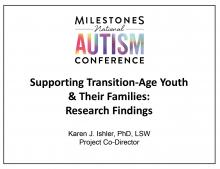
Project Co-Directors:
Davis E. Biegel, PhD Henry L. Zucker Professor of Social Work Practice, Jack, Joseph and Morton Mandel School of Applied Social Sciences
Karen J. Ishler, PhD Senior Research Associate, Jack, Joseph and Morton Mandel School of Applied Social Sciences
Download PDF
- Growing numbers of adolescents & young adults with ASD.
- Many young persons with ASD are at risk for reduced quality of life in adulthood.
- Across chronic illnesses and disabilities, providing care for a family member can result in family caregiver burden and depression.
- Families of adolescents and young adults with ASD face a variety of stressors, especially during the transition years.
- Examine Service Use of Youth with ASD & Their Family CGs ‐Service use & experiences ‐Facilitators & barriers to service use ‐Gaps in needed services
- Assess CG Burden Among These Family CGs
- Examine Impact of CG Stressors, Appraisals, Resources,and Services Gaps & Barriers on Family CG Outcomes
Also within each: Explore potential differences by family CG demographics and characteristics of youth with ASD.
Primary Findings – Service needs & barriers
Parent Training for Children with ASD Distruptive Behavior, Studies and Results Cynthia Johnson, PhD (2/19/19)
Cyntha Johnson, PhD Director, Lerner Autism Center at the Cleveland Clinic; Professor, CWRU
Supporting Families of Adolescents and Young Adults with ASD Beigel/Ishler (11/5/18)
Parent Training for Children with ASD Distruptive Behavior, Studies and Results, Cynthia Johnson, PhD (2/19/19)
Parent Training for Children with ASD Distruptive Behavior, Studies and Results
Supporting Families of Adolescents and Young Adults with ASD, Beigel/Ishler (11/5/18)
Previous Presentations
Prenatal Environment Exposures in Autism Alan S. Brown (10/10/13)
Alan S. Brown, MD. MPH
Professor of Psychiatry and Epidemiology at Columbia University Medical Center, the New York State Psychiatric Institute and the Joseph L. Mailman School of Public Health. Director of the Program in Birth Cohort Studies at Columbia University Medical Center.
CET: An EBP that Promotes Cognition and Social Recognition, Ray Gonzales (7/1/13)
CET: An EBP that Promotes Cognition and Social Cognition
Ray Gonzales, ACSW, LISW-S Executive Director at the Center for Cognition and Recovery, Cleveland/Akron, Ohio Are
Detecting Autism from Brain Activity: A MEG Study: Roberto Fernández Galán, PhD (6/6/13)
Detecting Autism from Brain Activity: A MEG Study
Roberto Fernández Galán, PhD Assistant professor of electrical engineering and computer science at Case School of Engineering
The Evolution of Clinical Outcomes Management System, Kearns (4/2/13)
The Evolution of Clinical Outcomes Management System
Kevin P. Kearns, PhD Vice President for Advancement, Engagement, and Economic Development, State University of New York at Fredonia
Clinical Management of Children with Autism Spectrum Disorders, Lecavalier (2/1/13)
Clinical Management of Children with ASD
Dr. Luc Lecavalier, Professor, IDD Faculty Depart of Psychology, Ohio State University
Thinking Differently: The Cognitive Processes of Adults, Children and Infants with Autism, Mark S. Strauss, PhD (11/30/12)
Thinking Differently: The Cognitive Processes of Adults, Children and Infants with Autism
Mark S. Strauss, PhD Associate Professor, Psychology, University of Pittsburgh
Using iPS Cells to Study Autism, Dolmetsch (11/4/12)
Using iPS Cells to Study Autism
Ricardo Dolmetsch, PhD Global Head of Neuroscience at Novartis Institutes for Biomedical Research Concord, Massachusetts
Using Induced Pluripotent Stem Cells to Study ASD, Dolmetsch (4/4/11)
Using Induced Pluripotent Stem Cells to Study ASD
Psychopharmacology in Autism: 15 years of Progress and a Long Way to Go Scahull (2012)
Psychopharmacology in Autism: 15 years of Progress and a Long Way to Go
Lawrence Scahill, MSN, PhD Professor of Nursing & Child Psychiatry Director of the Research Unit on Pediatric Psychopharmacology Yale Child Study Center
( download as PDF OR download powerpoint )
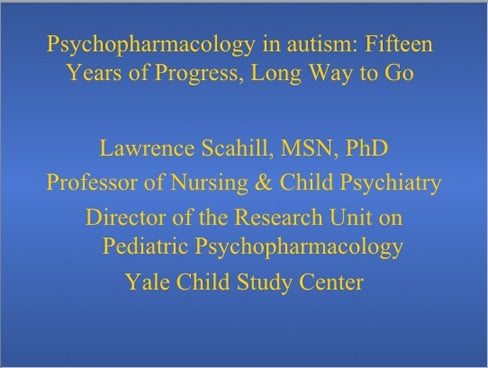
Autism Prevalence, Kralovic (2012)
Autism Prevalence 2012
Shanna Kralovic, DO Assistant professor Pediatrics, Division of Developmental/Behavioral Pediatrics and Psychology Rainbow Child Development Center

Behavioral Approaches to Autism Spectrum Disorders, Fisher (11/1/12)
Behavioral Approaches to Autism Spectrum Disorders
Wayne W. Fisher, PhD H.B. Munroe professor of behavioral research in the Munroe-Meyer Institute and the Department of Pediatrics at the University of Nebraska Medical Center (UNMC). Director of the Center for Autism Spectrum Disorders at the Munroe-Meyer Institute. He is a board certified behavior analyst at the doctoral level (BCBA-D), and a licensed psychologist.
The Evolution of Autism Research: A Child Neurologist's Perspective, Minshew (3/2/12)
The Evolution of Autism Research: A Child Neurologist's Perspective
Nancy Minshew, MD Director of the Autism Center for Excellence,University of Pittsburgh University of Pittsburgh Endowed Chair in Autism Research and Professor of Psychiatry and Neurology
Autism Research: Recent Advances + Future Directions, Shih (2011)
Autism Research: recent Advances and Future Directions
Andy Shih, PhD Senior Vice President, Public Health and Inclusion at Autism Speaks Principal investigator at Seattle Children’s Research Institute’s Center for Developmental Biology and Regenerative Medicine and is an associate professor at the University of Washington.
Download PDF


IMAGES
COMMENTS
Children with Autism Spectrum Disorders: Three Case Studies. Speech-language pathologists play a critical role in screening, assessing, diagnosing, and treating the language and social communication disorders of individuals with autism spectrum disorders (ASD). People with ASD use a variety of communication modes including speech, facial ...
There is no better way to study a typology of design than a case study. Advanced Autism Center Egypt is located in Cairo, Egypt. Ar Magda Mustafa designed it. Furthermore, Ar. Magda Mostafa designed the spaces for autistic children keeping their behavioral and design concepts in mind. Therefore the spaces are divided purposely into low, high ...
To learn about research at the Autism Center, call 206-987-7917 or email us. See our online listing of research studies and clinical trials. Get answers to common questions about taking part in research, such as how we protect your child's health and safety during research.
A Case Study of Autism:…. Arun was brought for consultation with Dr. A M Reddy by his parents. He was about 4 years old, the second child to the parents. Even while he was being brought into the room, we could hear his loud wailing. It took some time for the child to calm down and later we could observe that the child was very restless.
CASE STUDY EXAMPLE effective instructional strategy and parents of children with ASD have used this strategy to successfully teach requesting. Additionally, naturalistic intervention is designed to be conducted within natural routines. Next, Mrs. Dell creates a data collection system that is succinct and easy to implement
We are an "NIH Autism Center of Excellence" and part of the multi-site NIH Autism Biomarkers Consortium for Clinical Trials, the largest autism research study in NIH history. Creating accurate, scalable tools for early detection & treatment monitoring . A collaborative team of neurobiologists, computer engineers, data scientists, and ...
Participants. The six children (three girls and three boys) participating in the present case study were recruited from a large longitudinal population-based study, performed at the Child Neuropsychiatric Clinic (CNC) in Gothenburg (Kantzer et al., Citation 2013, Citation 2018).The children were initially identified by a general ASD screening at age 2.5 years at the public child health-care ...
Designing for Autism: A Case Study ... The Glickman Lauder Center of Excellence in Autism and Developmental Disorders Jon Boyd, AIA E4H Environments for Health Architecture . ... • Creating the "Autism Classroom of the Future" Best Practices in Autism Design Key Considerations • Lighting -natural, adjustable, and circadian • Finishes
Keywords: outdoor learning, nature-based learning, special education, case study, autism. Citation: Friedman S and Morrison SA (2021) "I just want to stay out there all day": A Case Study of Two Special Educators and Five Autistic Children Learning Outside at School. Front. Educ. 6:668991. doi: 10.3389/feduc.2021.668991
ABSTRACT. Spending time in nature has benefits for wellbeing in children, but relatively little is known about how autistic children experience nature. Framed by self-determination theory, this case study addresses this gap by exploring the experiences of 25 autistic children participating in a Forest School at their specialist school in the ...
The Pacific Autism Family Centre was a complex project with external and internal acoustics concerns being among the most critical design problems. BKL worked closely with us to identify both the acoustic issues and the most cost effective solutions to address them. Their attention to detail, technical knowledge and sensitivity to the budget ...
Frontiers in Psychiatry is proud to present our Case Reports series. Our case reports aim to highlight unique cases of patients that present with an unexpected/unusual diagnosis, treatment outcome, or clinical course. Case reports provide insight into the differential diagnosis, decision-making, and clinical management of unusual cases and are a valuable educational tool.<br/><br/>This ...
Almulla N. Diagnosis and Management of a 7-year Old Child with an Autism Spectrum Disorder (ASD) in Bahrain: A Case Study. International Journal of Scienti c Study2013; 1 (1) Recommended publications
This 4 storeyed center comprises of 8 classrooms for the secondary children, 5 Parent- child intervention rooms, 2 Sensory rooms, 2 Occupational therapy. rooms, a library and a Research unit. The ...
The Program for Autism Education and Research (PAER) at Case Western Reserve University has entered a research partnership with The Hartwell Foundation initiative: "Kids First" autism project. ... Cleveland Clinic Children's Center for Autism, is working with two federally funded studies focusing on addressing sleep problems and comparing ...
Social Sensory Architecture for Children with Autism. August 20, 2019. U-M architect and an associate professor at the University of Michigan's Taubman College of Architecture and Urban Planning ...
The article is a case study for the Autism Centre in Muroor in Abu Dhabi designed by Simon Humphrey. ... and parents and teachers are convinced that using PECS at Abu Dhabi Autism Center will help ...
Beyond the white - Rehabilitation center for autism - Asal Rababah April 4, 2023 Caudwell International Children's Centre for autism - Case studies - Autism project
NATIONAL CENTER FOR CASE STUDY TEACHING IN SCIENCE . Reproduced from "Mumps, measles, and rubella vaccine and the incidence of autism recorded by general practitioners: A time trend analysis," by Kaye, J.A., Melero-Montes, M., and Jick, H., British Medical Journal, 322(7284), pp. 460-463, ©2001, with permission from BMJ Publishing Croup Ltd.
Abstract. This article aims to observe all the manifestations of the behavior of a child with Autism Spectrum Disorder (ASD), which shows deficits mainly in the communication sector. Also, the ...
Prenatal Environment Exposures in Autism Alan S. Brown (10/10/13) Alan S. Brown, MD. MPH. Professor of Psychiatry and Epidemiology at Columbia University Medical Center, the New York State Psychiatric Institute and the Joseph L. Mailman School of Public Health. Director of the Program in Birth Cohort Studies at Columbia University Medical Center.
Autism: A case report. Manipal Journal of Nursing and Health Sciences, 7 (2). 78-82. Case Report. Au sm: A case report. Sunitha Solomon-Calvin*, Anice George. Email: [email protected] ...
Help Center. Here you'll find an answer to your question. Webinars. ... from The Pears Centre for Autism - Case Study. by asal rababah. Next Article. from The Pears Centre for Autism - Case Study ...